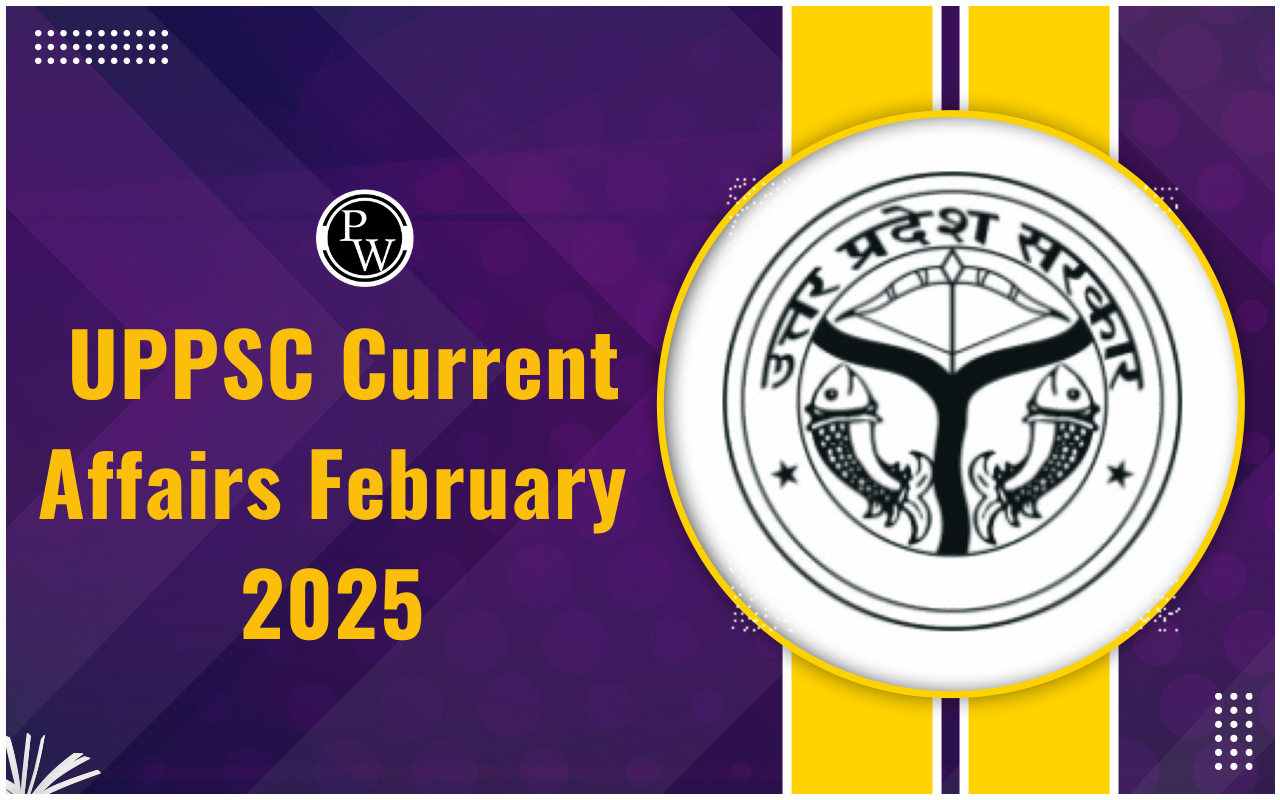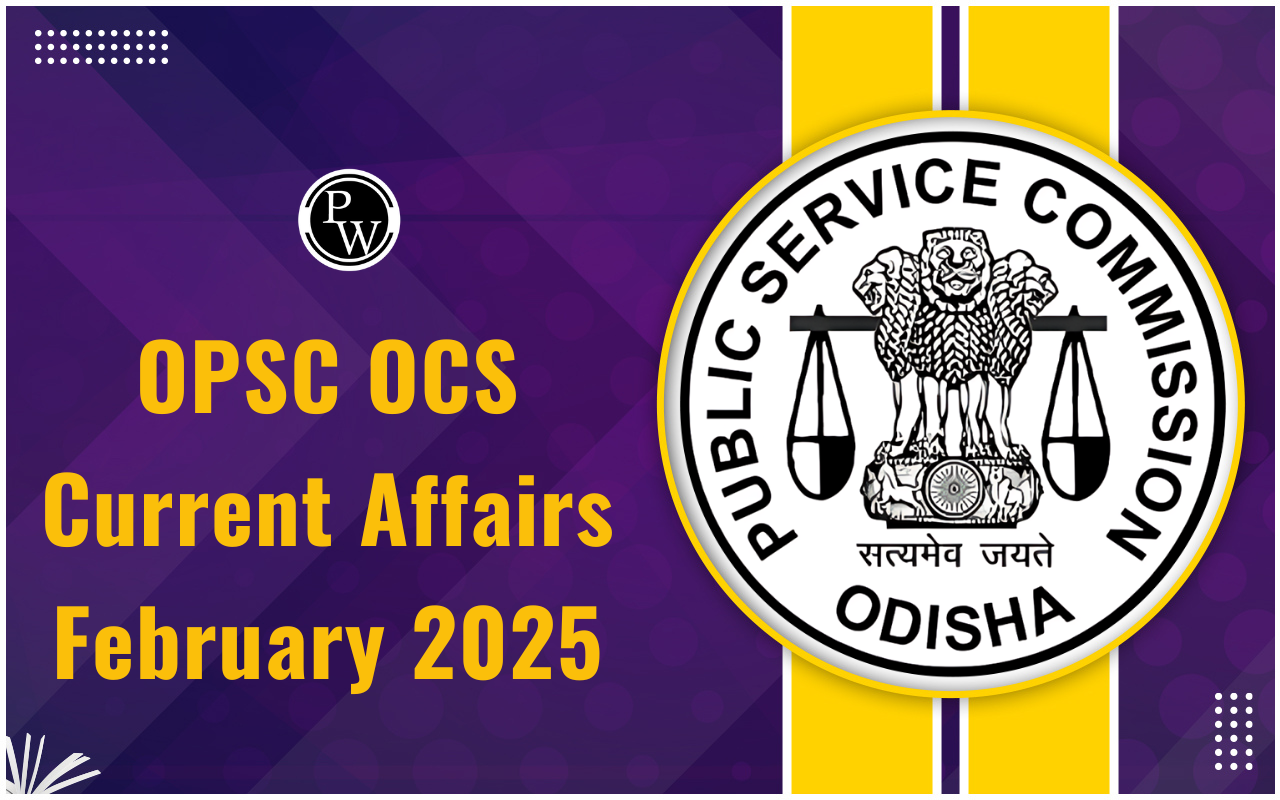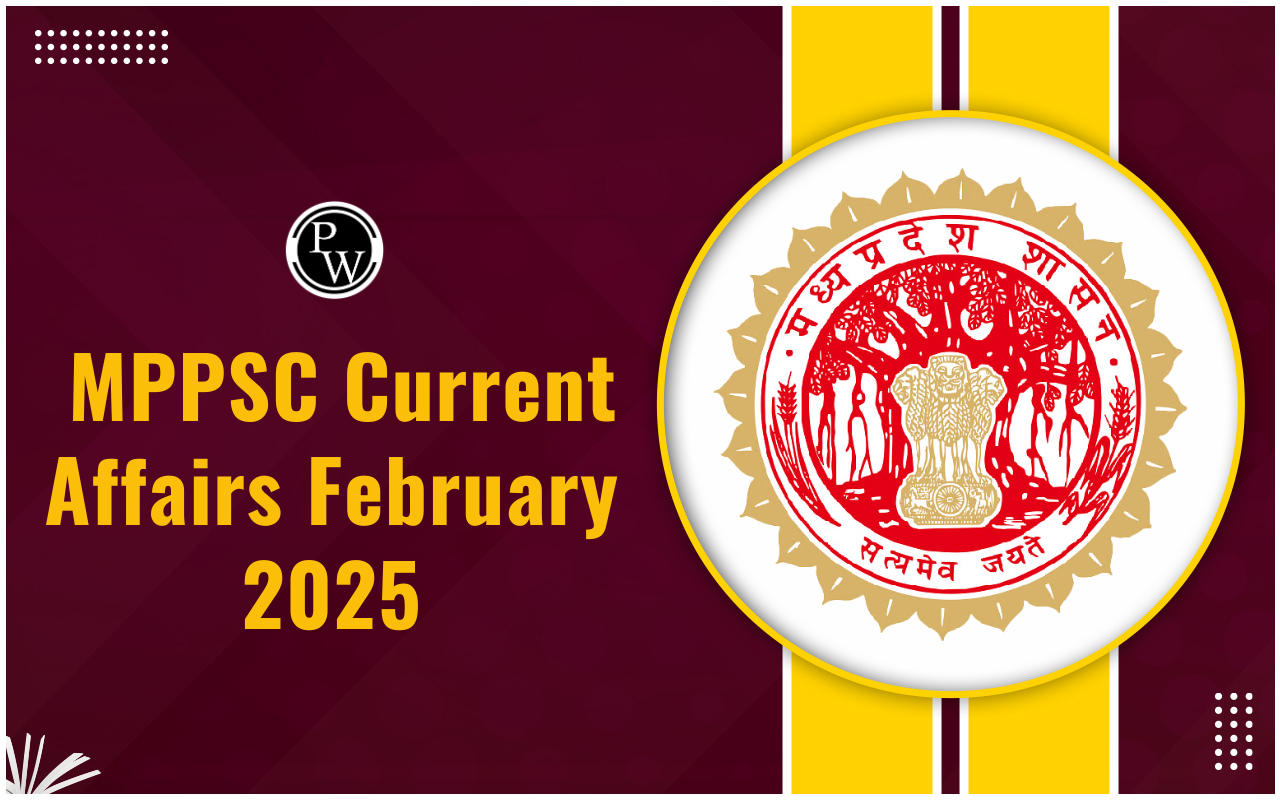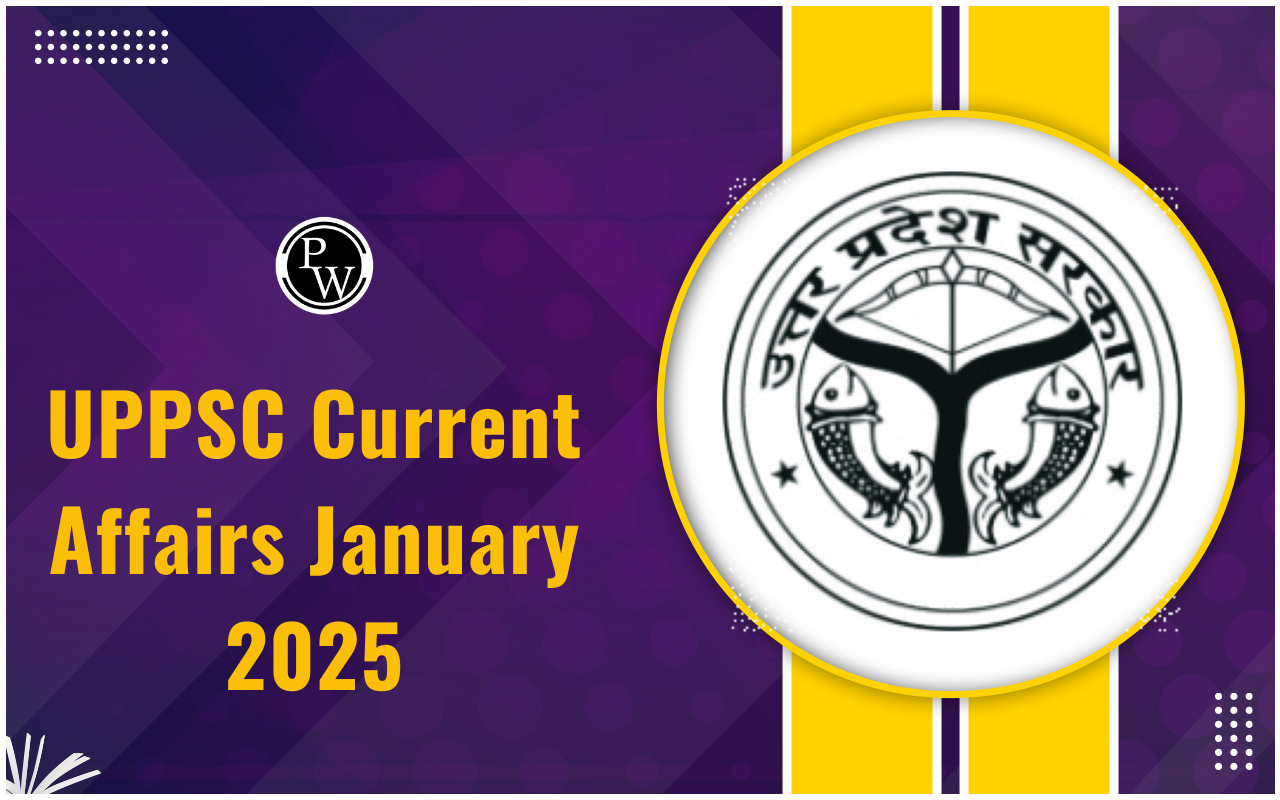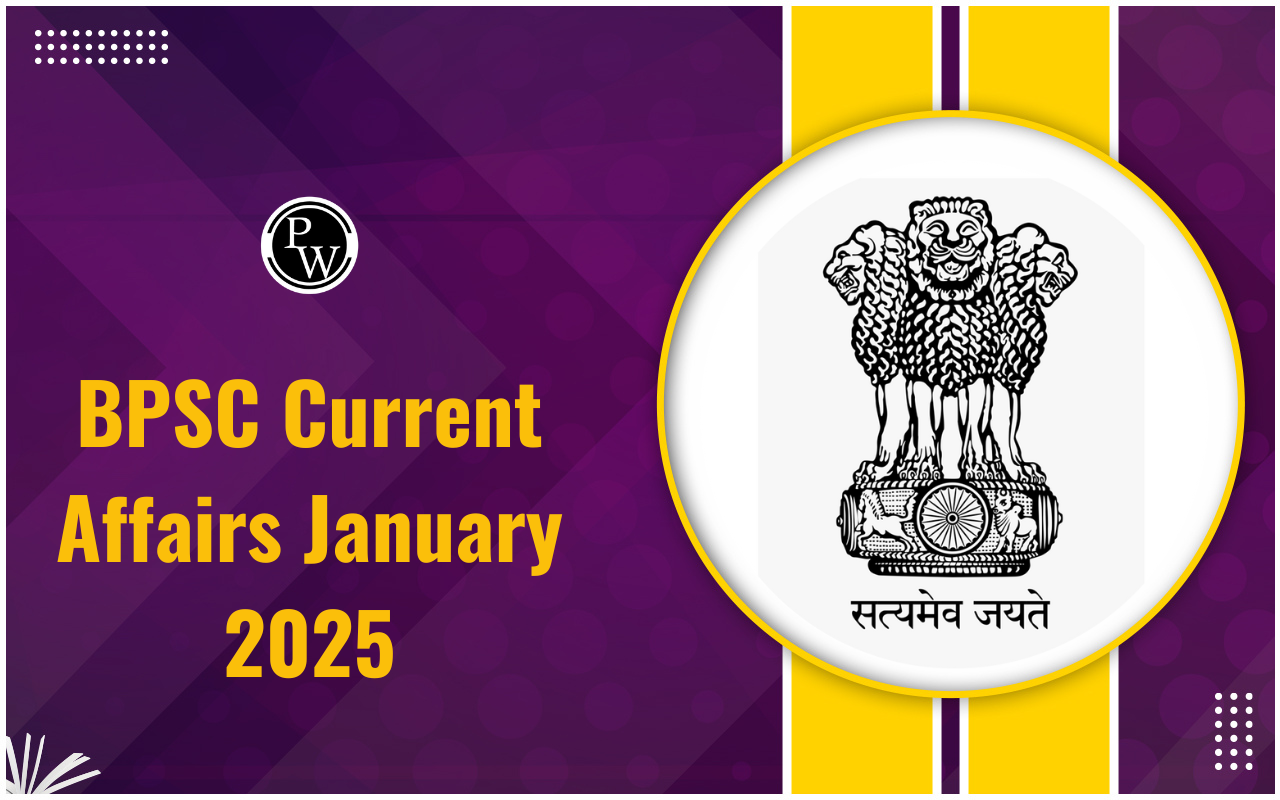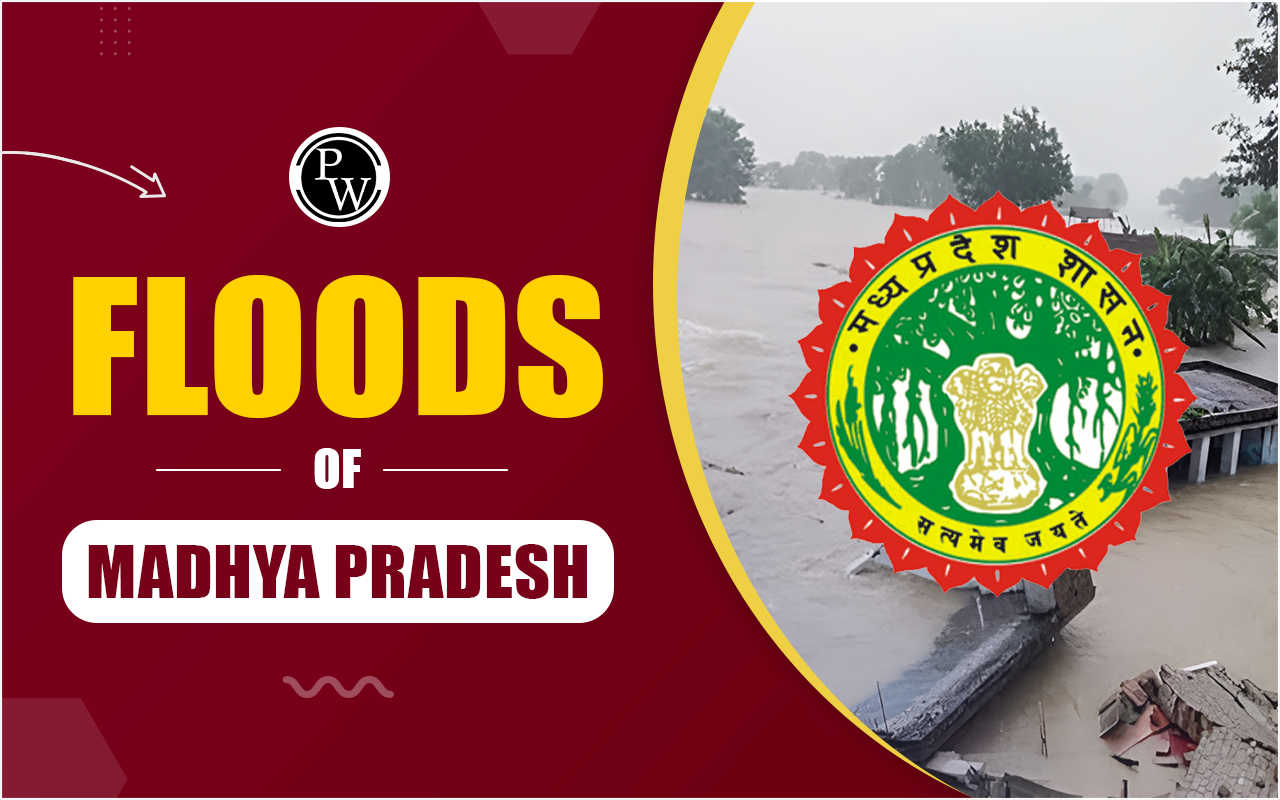
Floods in Madhya Pradesh: Madhya Pradesh, known as the "Heart of India" due to its central location, has faced many natural disasters, and floods in Madhya Pradesh are one of the most frequent and devastating calamities. The state is renowned for its rich cultural heritage and natural beauty but it is also vulnerable to unpredictable climatic conditions. Floods in Madhya Pradesh 2024 have once again raised concerns about the preparedness level of the state and will cause the long-term impact of climate change on its geography.
We have created this blogpost, so that candidates can explore the floods in Madhya Pradesh , focusing on their causes, history, and the flood-prone areas in the state, highlighting the harshness of the situation and the need for effective flood management strategies.
Floods in Madhya Pradesh 2024
Floods in Madhya Pradesh 2024 have once again demonstrated the vulnerability of Madhya Pradesh towards natural disasters, especially floods. This year, districts like Hoshangabad , Jabalpur , and parts of northern Madhya Pradesh have been severely affected. Heavy rains led to the overflowing of the Narmada and Chambal rivers , causing widespread flooding.
| Floods in Madhya Pradesh | |
|---|---|
| Category | Details |
| Event | Floods in Madhya Pradesh 2024 |
| Date | July-August 2024 |
| Affected Districts |
|
| Cause | Heavy monsoon rains and overflowing rivers (Narmada, Chambal, Betwa) |
| Impact | Flash floods, Waterlogging, Infrastructure damage, Crop losses |
| Fatalities/Injuries | 50+ fatalities, hundreds injured |
| Displaced Population | Over 100,000 people displaced |
| Government Response | Rescue operations, Relief camps, Food & Medical supplies |
| Rescue Agencies | NDRF, SDRF, Indian Army, Local authorities |
| Economic Loss | Estimated losses worth ₹2,000+ crore |
| Key Measures Taken | Evacuation, Temporary shelters, Flood warnings, Distribution of essentials |
| Future Action Plans | Improved flood management systems, River embankments, Early warning systems |
Impact on Livelihoods and Economy
The floods in Madhya Pradesh 2024 have had a devastating impact on agriculture, infrastructure, and livelihoods. Farmers in flood-prone areas, particularly those cultivating near riverbanks, have faced massive losses as their fields were sunk. Additionally, the destruction of roads, bridges, and public infrastructure has resulted in huge economic setbacks for the state.
Displacement and Relief Measures
Thousands of people were displaced due to floods in Madhya Pradesh this year. Relief operations have not been able to prevent the damage caused by floods and river overflows. The government has provided temporary shelters, food, and medical aid to those affected, but long-term restoration remains a challenge.
History of Floods in Madhya Pradesh
The floods in Madhya Pradesh history are long and tragic, with many major floods occurring over the past few decades. From the Narmada's overflow to urban flooding in cities like Bhopal and Indore, Madhya Pradesh has seen some of the most extreme floods in India.
1. Floods of 1973
One of the earliest recorded intense floods in Madhya Pradesh occurred in 1973, when the Narmada River overflowed, affecting large parts of Hoshangabad and nearby districts . This flood led to a significant loss of life and property and remains one of the most destructive natural disasters in the state’s history.
2. Floods of 2013
In 2013, heavy monsoon rains caused devastating floods across Madhya Pradesh. Districts like Jabalpur , Mandla , and Narsinghpur were severely affected, with thousands of people displaced. The floods damaged crops, homes, and infrastructure, causing a substantial economic loss.
3. Floods in Recent Years
In recent years, floods in Madhya Pradesh have become more frequent. The floods of 2020 and 2021, and floods in Madhya Pradesh 2024 have highlighted the growing unpredictability of the monsoon season and the increasing harshness of flooding in both rural and urban areas. As the climate continues to change, it is expected that flooding will only intensify in the future.
- Extreme floods hit several districts of Madhya Pradesh from 01 August 2021 due to heavy rain, overflowing rivers, and dam releases. Guna recorded 470 mm of rain in 12 hours between 02 and 03 August . The Sind River in Datia reached a record 143.5 meters, surpassing the 1971 high.
- 1,225 villages were affected in Shivpuri , Sheopur , Datia , Gwalior , Guna , Bhind , and Morena districts. Ashok Nagar was later impacted. Over 8,800 people were rescued, and 29,280 were evacuated and helped by the Air Force, Army, and disaster response teams.
Causes of Floods in Madhya Pradesh
The primary reasons for floods in Madhya Pradesh are heavy rainfall, overflowing rivers, deforestation, and poor urban planning. The monsoon season, which usually runs from June to September, brings rapid rains, particularly in the northern and central parts of the state . In recent years, changing weather patterns due to climate change have intensified the situation , leading to floods in both urban and rural areas.
1. Heavy Rainfall
One of the most significant contributors to floods in Madhya Pradesh is excessive rainfall during the monsoon season. The state often experiences long periods of rain, leading to the overflowing of rivers like the Narmada , Chambal , and Betwa . Floods in Madhya Pradesh 2024 , many regions have recorded rainfall exceeding normal levels, which has made more worse the flooding situation.
2. River Overflow
Madhya Pradesh is home to several rivers, and when these rivers receive excessive rainwater, they tend to overflow. This not only floods nearby areas but also submerges low-lying regions. In floods in Madhya Pradesh history , the Narmada River has been a key player in creating flood-like situations, particularly in districts like Hoshangabad and Jabalpur. The Chambal River also causes flooding, affecting large portions of the northern areas.
3. Poor Urban Drainage and Infrastructure
Another factor contributing to floods in Madhya Pradesh is the inadequate urban drainage systems in major cities. As cities develop and urbanization expands, the natural flow of water is blocked. This can be especially seen in cities like Bhopal, Indore, and Ujjain , where flooding has become a regular issue due to hazardous construction and lack of proper drainage.
Flood Prone Areas in Madhya Pradesh
There are certain areas in Madhya Pradesh that are more vulnerable to flooding than others. These flood-prone areas in Madhya Pradesh are primarily located near rivers or in low-lying regions.
1. Hoshangabad
Hoshangabad, located on the banks of the Narmada River, is one of the most frequently affected areas during floods in Madhya Pradesh . In recent years, the district has experienced several severe floods that have displaced thousands of people.
2. Jabalpur
Jabalpur is another major city prone to flooding due to its proximity to the Narmada River. The city's low-lying areas are particularly vulnerable, and during the floods in Madhya Pradesh 2024 , several neighbourhoods were flooded, causing significant property damage.
3. Morena and Bhind
In northern Madhya Pradesh, the Chambal River creates a constant threat of flooding in districts like Morena and Bhind . These areas are agriculturally rich but suffer considerable losses due to annual floods, which damage crops and displace rural populations.
4. Bhopal and Indore
Though Bhopal and Indore are not located directly on riverbanks, both cities face urban flooding due to poor drainage systems and unplanned urbanization. During heavy rainfall, these cities often witness waterlogging, leading to traffic disruptions and damage to homes.
| For Additional Information refer to Flood Inundation Map in part of Madhya Pradesh |
| Click Here |
Solutions and Preventive Measures
To mitigate the effects of floods in Madhya Pradesh , a combination of infrastructure improvements, environmental conservation, and better urban planning is necessary.
1. Building Better Drainage Systems
Improving urban drainage systems is necessary, particularly in cities like Bhopal, Indore, and Ujjain. Properly managed drainage can reduce waterlogging and minimize the impact of urban flooding.
2. River Embankments and Dams
Strengthening river embankments and constructing dams can help in controlling the overflow of major rivers like the Narmada and Chambal. These measures have been partially implemented, but more comprehensive flood control infrastructure is required.
Highest Mountain Peak in Madhya Pradesh
3. Reforestation and Conservation
Deforestation is one of the ultimate causes of floods, as it reduces the land's ability to absorb water. Planting more trees and conserving natural ecosystems can help to reduce the severity of floods.
4. Early Warning Systems
Implementing better early warning systems can help to prepare communities for upcoming floods, allowing for timely evacuations and preventive measures.
floods in Madhya Pradesh FAQs
Q.1 Which areas are flood prone in Madhya Pradesh?
Q.2 What is the most common disaster in Madhya Pradesh?
Q.3 What are the main causes of floods in Madhya Pradesh?
Q.4 How do floods in Madhya Pradesh history affect the state?
Q.5 How can we reduce the impact of floods in Madhya Pradesh?






